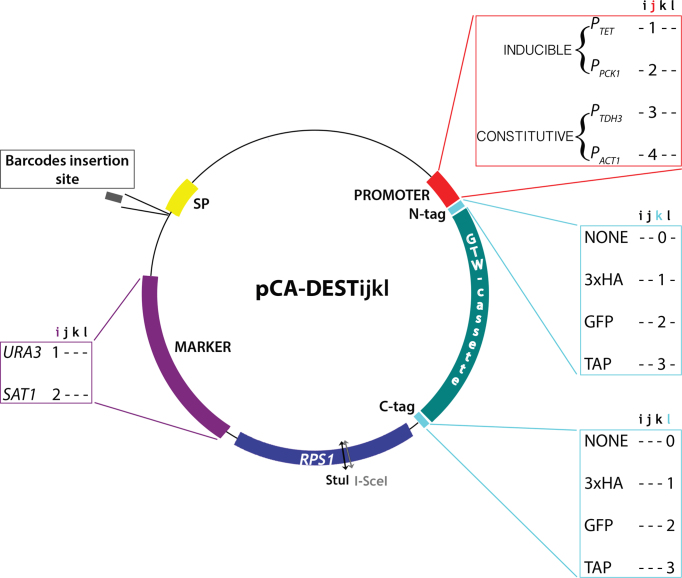Figure 3.
Structure of the destination vectors for use with the Candida albicans ORFeome. Schematic view of the 49 destination vectors, each designated with a standardized nomenclature, pCA-DESTijkl, whereby i stands for the transformation marker (1, URA3; 2, NAT1); j stands for the promoter (1, PTET; 2, PPCK1; 3, PTDH3; 4, PACT1); k stands for N-terminal tagging (0, no tag; 1, 3xHA; 2, GFP; 3, TAP); and l stands for C-terminal tagging (0, no tag; 1, 3xHA; 2, GFP; 3, TAP). The spacer sequence (SP), represented by the yellow box, is intended to facilitate subsequent Illumina-based barcode sequencing. The Gateway cassette (GTW), represented by the green box, requires working with ccdB resistant Escherichia coli strains. Integration of StuI-linearized plasmids (or at the nearby I-SceI site if the cloned ORF contains StuI sites) is targeted at the RPS1 locus.

